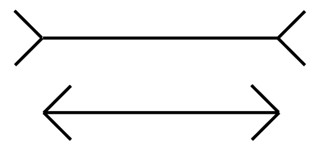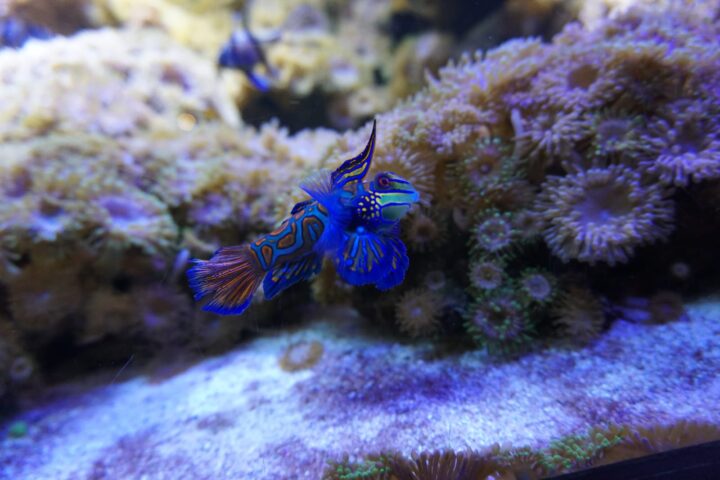Think fish are dumb and not interesting? Let’s dive in.
What’s your take on fish? Are they not interesting? Dumb? How many people do you know consider themselves vegetarian yet still eat fish, as if fish weren’t animals too? In this blog, I want to invite you to look at fish a little differently. They are often judged as boring or insignificant, but I’ll show you why this is worth questioning, and how this topic has led to one of the topics I’m exploring during my PhD.
Why don’t we care so much about fish?
Let’s start at the beginning: human don’t like and don’t care about fish. Fish don’t have a very good press in the world. They don’t look like us that much and we can’t detect the slightest emotion coming from them, you know, this is why you’re more excited to see a panda instead of a tapeworm or mussels when you go to a zoo. Fish are so considered as sub-animals that they become the most exploited: an author, Alison Mood, established using FAO data from 2007 to 2016, that every year, between 790 billion and 2.3 trillion fish were killed (790,000,000,000 – 2,300,000,000,000, huge). To put that in perspective: if 1 trillion fish caught were the size of a banknote and you laid them end to end, they could reach all the way to the sun. And that’s just commercial fishing, calculations do not take into account recreational fishing, bycatch, illegal fishing, fish released and killed because of nets… meaning the real number is likely much higher. Why do we allow this? Partly because we don’t understand fish. They live in a totally different environment which doesn’t have the same properties as the environment we live in, and fish seem emotionally blank, unintelligent, and unfeeling. Except, that’s totally false.
It was long believed that the seat of “sentience” (the ability to feel, to experience things as positive or negative; a sentient being therefore feels pain as well as pleasure) was the neocortex (now called six-layered cortex), which is only present in mammals. So for years, we assumed the fact that fish could not be sentient and endowed with sensitivity since they are not mammals. But there is another group of animals who doesn’t have a neocortex either, but who, through the use of tools, problem solving, and understanding physical phenomena, is also admitted to be sentient: birds. Indeed, birds have an area of their brain called the pallium in which the sentience takes place, so apparently no need to have this six-layered cortex to be sentient. It is also complicated to show that fish actually feels things, but there is one sensation that can prove you that: pain. Pain isn’t cool, yes, but when you want to prove that something feels things, it’s still very useful. You make it suffer, and you watch its reaction: Does it run away? Does it act strangely? If yes, then it is endowed with sensitivity and it feels pain. A lot of studies have shown that fish indeed feel pain (see the work of Lynne Sneddon), and have the same neural structure as mammalians, structure responsible for the nerve message of pain. So it is not because we don’t hear them scream that they don’t feel anything. And talking about birds, did you know that fish can actually fly?? Yes, flying fish can fly up to 40 meters for 30 seconds, hit speeds of 50 km/h, worthy of a Bugatti at least! It would mainly serve them as an anti-predator technique against the boobies and albatrosses for example, so they have some things in common with other species.
But, do fish have the ability to express complex behaviour??
If I’m asking this question, you can easily conclude what is the answer: yes of course, but let’s talk about some examples.
Gobies are small fish that live on the foreshore. This environment is harsh with many different parameters that change in a day as high and low tides alternate, such as temperature, salinity, humidity. All these changing parameters make it an environment in which you have to be pretty well adapted, knowing that abiotic parameters are not the only ones that can have an impact on you, predators too… The crazy thing is that some gobies (Bathygobius soporator), at low tide, manage to jump from puddle to puddle (called basins) without crashing on the rock, which is incredible, right? From there, researchers wondered how they actually manage to fall into the water almost every time (see the work of Lester Aronson)? They recreate a foreshore filled with water in the lab (representing a high tide) with two groups of gobies: one that had already spent time in the water-filled device, and another that had never seen the device. They noticed that when they lowered the water level to form basins and simulated the presence of a heron with a pencil, fish that had never been in contact with the recreated foreshore managed to jump into an adjacent basin in 15% of cases, while 97% of fish that had already been in contact with the recreated foreshore managed to jump into an adjacent basin. Gobies at high tide learn by heart the topography of the environment and deduce what will be filled with water at low tide (the holes generally), and when the tide is low, they remember which areas have filled with water and simply jump in, which is stunning.
The cleaner wrasse (Labroides dimidiatus) is a small species of fish that lives in coral reefs. They look classic but don’t be fooled, they are not, at all. In fact, they run cleaning stations in the reefs: if you want to have your parasites removed or just give yourself a little makeover, they will be happy to welcome you since they will feast on your filth. They live in a harem with the dominant male who runs the cleaning station and who does not hesitate to punish females who do not clean very well or who hurt customers. Because yes, the problem is that mucus is really good, so sometimes they can’t help but nibble a little piece while passing, but it’s bad publicity for the station, who would want to be nibbled!! When that happens, the male will not hesitate to punish the female proportionally to her error, and when the customer comes back, he will be very attentive to him so that he comes back afterwards, no third chance (see Raihani et al., 2012). But sometimes, it happens that the female does as she pleases and continues to pick up mucus here and there: if it’s too much, the male chases the female away for good. This is what happened in captivity, except that it is a protandrous species (female transforms into male when the dominant male is no longer there) so the greedy female who got shanked transformed into a male and opened her own cleaning station with her new harem, not far from that of her ex. The story could have ended there with two stations competing, but no! The former female who became a male returned to her ex’s station to binge the customers, who then went to her own station where, of course, she was super careful, very resentful one. These fish are also more gifted than primates in certain exercises (see the work of Redouan Bshary), we are not the smartest!
Our history as humans is also tightly linked to them…
Herrings (Clupea harengus) are small pelagic fish widely spread, but I’m not going to talk about their appearance here. Context: 1982, we are in the middle of the Cold War, the Soviet are putting pressure in Europe and we fear a 3rd World War. In this context, Sweden begins to be suspicious, especially after 1981 when a Soviet submarine had been detected in the Swedish waters, claiming they were in distress and had navigation errors. Sweden started then to intercept strange waves coming from the Baltic Sea, but as soon as the militaries were sent there, they didn’t get their hands on anything. They were convinced: it is the very latest Soviet submarine, so sophisticated that we can’t get our hands on it. Every night, they heared these noises and each time when they were checking, nothing, so much so that they decide to confront them and catch them in the act, but the Soviets obviously deny it, they weren’t going to reveal the existence of their secret submarine after all… In 1996, after the end of the Cold War, the file was no longer classified and Sweden decided to hire bioacousticians to get to the bottom of it and understand where this mysterious noise was coming from. Well, it was herring farts. Fish have what’s called a swim bladder which allows them to control their buoyancy: the more gas you remove from it, the more you sink. Herring use it a lot to communicate with each other before going to bed, and obviously, you empty a gas underwater, well it makes a noise and that was just it, not a nasty Soviet submarine that wanted their skin. Coming this close to a 3rd World War because of herring farts, let’s be honest and recognize this is a lovely story. Magnus Wahlberg, one of the involved researchers, did a TEDx Talk in 2012 about that, if you want to understand in more detailed what happened.
At the end, are they that different from us?
The “umwelt” is the way in which an organism perceives and experience its environment through the different sensory organs and perceptual systems. We’ve long wondered what the umwelt of fish is, how do they perceive the world through their senses? What do they see, what do they hear, what do they feel? To see if their umwelt could get a little closer to ours, what better way than to subject them to optical illusions? Well, that’s what scientists have done by teaching small fish called Xenotoca eiseni to touch the biggest circle or the longest line in order to receive food, and then put this in front of their eyes:


On the left, the Ebbinghaus illusion, and on the right, the Müller-Lyer illusion
In your opinion, which circle is the biggest and which line is the biggest? You’re probably going to say the circle on the right and the line on top because, well, it’s obvious. Not only is it false and the two circles and the two segments are exactly the same size, but something even more incredible: the fish responded just like you. Yes, they were fooled by the illusion exactly like you, which means that their way of perceiving their environment with eyesight is not only based on an automatic response to a stimulus, but on a mental process of information inclusion that is not that different from ours, including the context into the assimilation of information, and this phenomenon has also been observed on bullhead sharks and goldfish.
And also, we are fish. Indeed, “fish” aren’t a real biological group, at least, not in the way most people think. Have a quick look at this really simplified phylogeny tree:

Scientifically speaking, the word “fish” refers to a paraphyletic group, which means a group made of organisms sharing common characters, but not including all the descendants. In short: it’s a category based more on convenience than evolutionary accuracy. Good examples of that are reptiles – if reptiles are reptiles, then birds are also reptiles – or dinosaurs – if dinosaurs are dinosaurs, then birds are also dinosaurs – and it’s the same with fish: if fish are fish… then we are also fish. As you can see on the phylogenetic tree, fish are not a monophyletic group but are divided between the chondrichthyes (sharks and rays generally), the actinopterygii (most fish like goldfish, tuna and all that), and the sarcopterygii, (coelacanths, for the best known). But here’s the twist: we are sarcopterygii too, so coelacanths are closer to us than to a tuna, enough to set the record straight. This complexity and fascinating findings are the reason why I started a PhD in fish biology, and why during my bachelors and master years, I did every internship I could with fish. I continued and it led to a master project that is the basis of my current PhD position with UTU-GreDiT where I now research the impact of hypoxia (low oxygen concentration in the water) on fish behaviour, cognition, and brain. I design mazes and task the fish must complete to have a reward, I’m looking at their brain regions to link their behaviour to a specifics brain area, I’m looking at how their sociability and risk-taking behaviour are impacted by hypoxia and how they will have the ability to evolve in the future, especially in the context of current global changes… all different things that are fascinating for me and that could help us to predict how species will cope with future global changes.
I hope that this little blog and my research more globally spark some curiosity in you, and that now you believe that every species has something interesting to study. Fish are diverse, express complex behaviours and cognitive skills, and are crucial to the different ecosystems on Earth. If my research can help change how even a few people see them, I’ll consider that a win. And if you ever doubt their worth, just remember the saying:”If you judge a fish by its ability to climb a tree, it will live its whole life believing that it is stupid”.
 Funded by the European Union. Views and opinions expressed are however those of the author(s) only and do not necessarily reflect those of the European Union or European Research Executive Agency (REA). Neither the European Union nor REA can be held responsible for them.
Funded by the European Union. Views and opinions expressed are however those of the author(s) only and do not necessarily reflect those of the European Union or European Research Executive Agency (REA). Neither the European Union nor REA can be held responsible for them.
